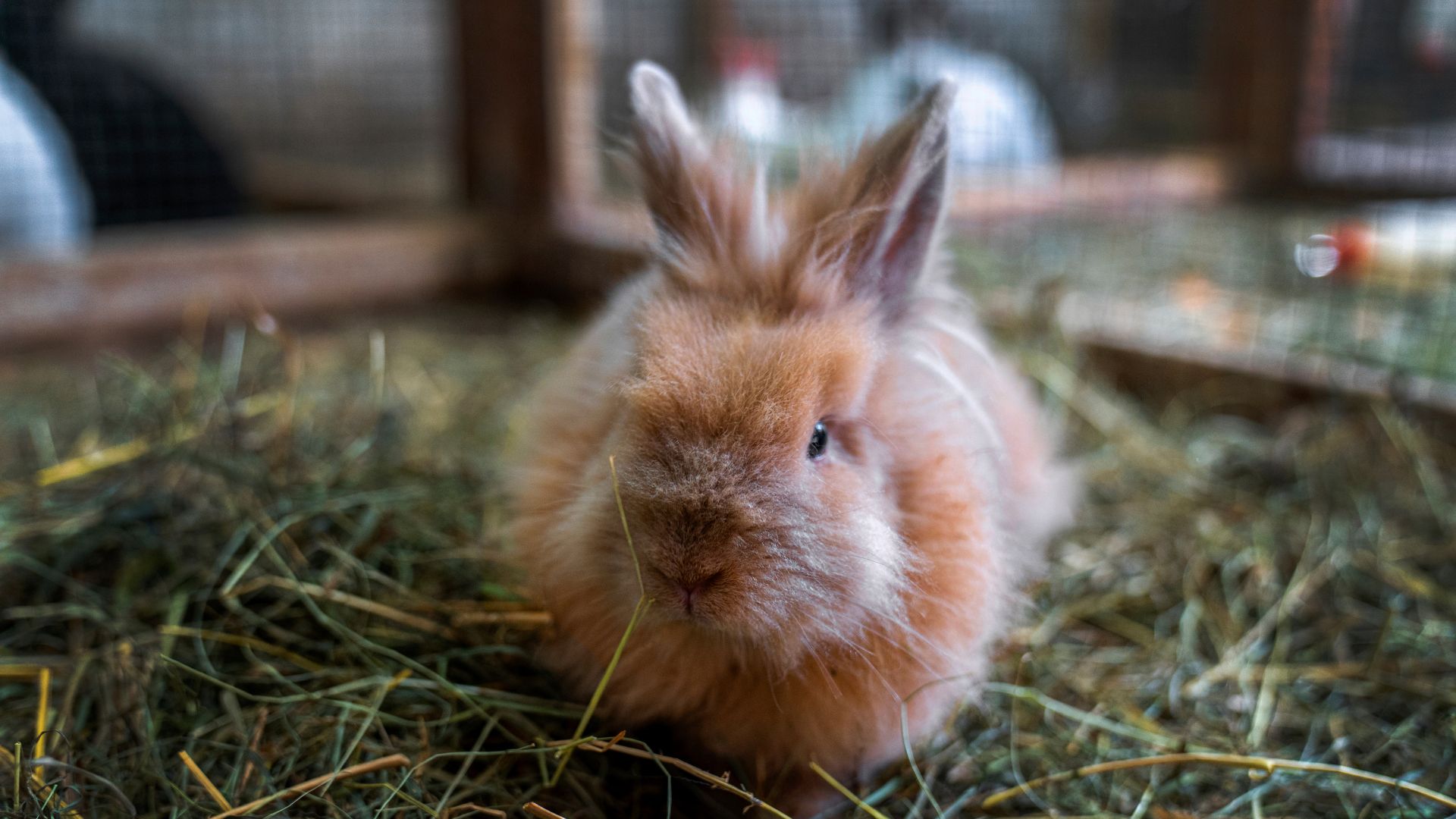
What do rabbits need in their cage? If you're bringing home a bunny for the first time, it's important that you have everything ready for their arrival to help them settle in.
Before you welcome your new fur friend home, you'll want to invest in one of the best indoor rabbit hutches. This should be big enough for your bunny to stand up on its hindlegs without touching the roof, allow them to lie down flat in every direction and take a few hops. You'll also want to provide them with a living area where they can run around and get some much-needed exercise.
When it comes to rabbit care, there are so many things to think about. To make your life easier, we've put together a complete checklist of everything your rabbit needs in their cage. We've also recommended some high-quality products to save you time:
What do rabbits need in their cage?
Toys
Bunnies are intelligent and need to be mentally stimulated - whether that's through solo play or interactive play with you. To ensure your rabbit doesn't get bored, make sure you provide them with the best rabbit toys in their cage.
Stuck for ideas? You could fill up a puzzle feeder (like this one on Amazon) with their favorite food to activate their natural foraging instincts or give them a chew toy to gnaw their teeth into. You could also provide them with a digging toy (like this one on Chewy) and a tossing toy (such as these baby stacking cups that you can hide food in too).
Hiding places
Since rabbits are prey animals, they need to have some hiding places to help them feel secure. Even if their hutch looks safe to you, they'll appreciate somewhere to go if they ever feel frightened, sick or anxious.
Position them in a safe, quiet place where your rabbit can't see or smell any predators. Like the rest of the cage, this place should be comfortable and out of any direct sunlight or draughts. If you have more than one bunny, give them their own hiding space each.
This could simply be a cardboard box or a tunnel, but if you want something that will last long-term, there are lots of affordable houses that you can buy.
Note: If your bunny is hiding on a regular basis, it's worth paying a visit to the vet.
Water bowl or bottle
Your bunny needs 24/7 access to clean, fresh water to ensure they stay hydrated. They should be drinking 50 to 150ml of water per kg of bodyweight.
Drinking water has lots of health benefits, such as helping with digestion, and keeping their heart and kidney healthy. It's also a way to prevent overheating in the summer (this feature has other ways on how to keep a rabbit cool in the summer).
You can choose from a water bowl or bottle (or both), depending on what your preferences are. Whilst water bowls are more comfortable for your bunny to drink from, they do run the risk of contamination and can be messy. To avoid unwanted spills, choose one with a wide base.
Litter box
No one wants to toilet near their living area — and rabbits are no exception! Make sure you provide your rabbit with a separate place to do their business, like the best rabbit litter box. Bigger litter boxes are usually better, so it’s worth looking at kitten litter boxes (like this one on Amazon) if you’ve got a medium-large rabbit.
Fill this up with shredded paper, hay, straw, or newspaper, and remember to change it regularly. Want to learn how to clean a rabbit cage? This guide can help you.
Bedding
To help absorb any moisture, line your rabbit's cage with wood pellets, pulped paper, paper pellets, shredded paper or newspaper. You then want to cover it with high-quality, dust-free straw to keep them warm and comfortable.
If you choose to line the cage with newspaper (or any inked paper), make sure you use a generous amount of straw to prevent them eating it.
Hay feeder
Wondering what to feed a rabbit? According to vet Dr. Rebecca MacMillan, their diet should be made up of fresh grass or hay primarily. You can put this in a hay feeder to keep it separate from their bedding and to ensure it stays clean. These can be attached to the walls of your bunny's cage, and encourages them to eat slowly. Most bunnies prefer to eat while they use their litter box, so attaching it next to the box is a great choice.
You should also provide them with additional hay in a clean area (like a tunnel or a box) for foraging. You can sprinkle leafy greens and vegetables (which is 10% of their diet) and pellets (5% of their diet) in this hay. This will keep them mentally stimulated and help to prevent boredom.
Living space
Rabbits need plenty of exercise, so ensure their cage has access to a living space where they can run around, jump and stretch their legs. This could be a secured area in your garden, a particular room or area in your home, or all of your home.
If you decide to let them roam free inside, be sure to bunny-proof your home and make sure electrical leads and wires are out of reach. You might prefer to put them in a place with hard flooring to make clean-ups easier.
For more rabbit care advice, read our guide on the best rabbit brushes.







